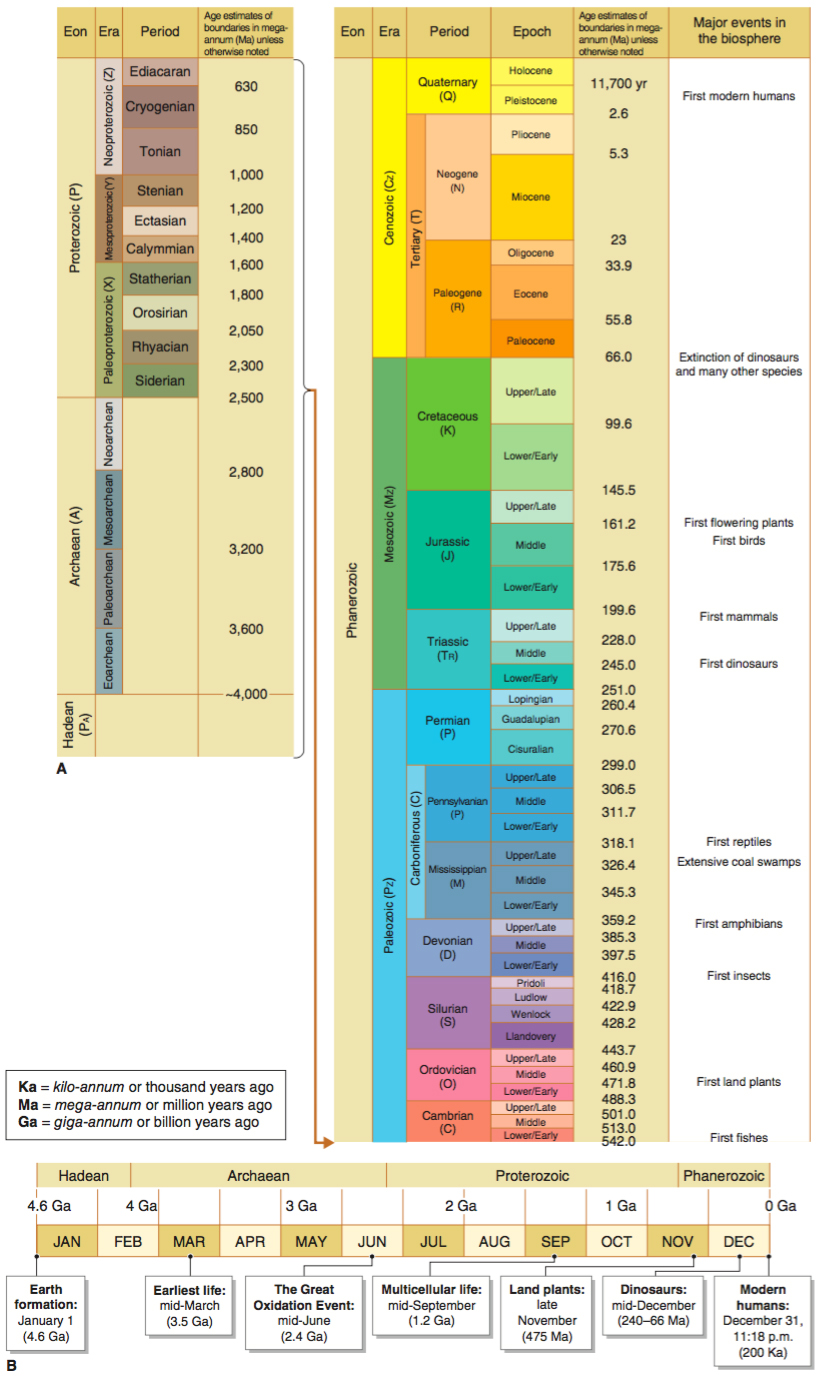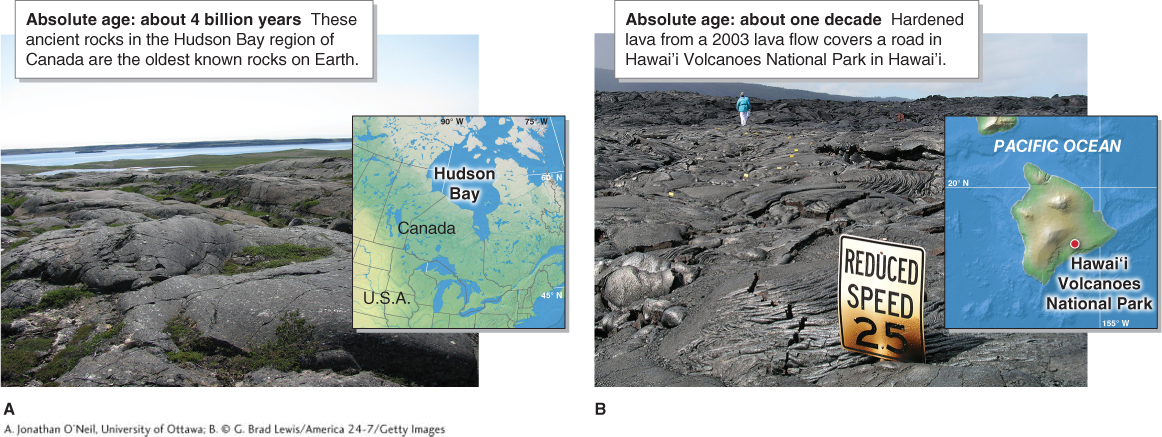11.2 Deep History: Geologic Time
Describe the major divisions of geologic time and explain how the age of ancient Earth material is determined.
Earth is 4.6 billion years old. This immense span of Earth history is divided and subdivided using the geologic time scale (Figure 11.6A). The divisions of time are based on major geologic events, such as mass extinction events, where at least 75% of all species go extinct. The five mass extinctions in Earth’s history were caused by many factors, including periods of intense volcanic activity, global climate change, and asteroid impacts. Episodes of rapid evolution of new species also provide a basis for defining new divisions of time. The immensity of geologic time is revealed if it is compressed into a single calendar year (Figure 11.6B).

Figure 11.6
The Principle of Uniformitarianism
Uniformitarianism is the principle that the same gradual and nearly imperceptible processes are operating now and have operated in the past. Most physical and biological systems that we see today are the result of small and gradual changes accumulating over long periods of time. The term uniformitarianism can also be summarized in the phrase, “The present is the key to the past.” The processes that shape Earth are similar to tree growth: It is nearly impossible to watch a tree grow, yet we know that even the largest trees grow from small seeds. Similarly, the Grand Canyon was formed by geologic uplift coupled with down cutting by the Colorado River. As the land slowly rose, the river carved into the rocks, sand grain by sand grain, eventually forming a mile-
uniformitarianism
The principle that the same imperceptible gradual processes are operating now and have operated in the past.
Uniformitarianism underpins almost all the tectonic and erosional processes that we will describe in the rest of this book. This key concept is also central to understanding the process of biological evolution that resulted in Earth’s biodiversity. Over 3.5 billion years, through the accumulation of gradual changes, the first single-
Sudden catastrophic events also play an important role in Earth history, however. Collisions with asteroids, for example, have changed the course of history for the biosphere. After the removal of the dinosaurs, most likely by an asteroid impact, 66 million years ago, mammals evolved and filled their vacated niches. Catastrophic events occur intermittently, but uniformitarianism is constant.
How Do Scientists Date Earth Materials?
In Earth science, there are two ways to evaluate the age of an object. Relative age compares the age of one object or event with the age of another without specifying how old either is. Absolute age is an age that is specified in years before the present.
relative age
The age of one object or event in relation to the age of another without regard to how old either is.
absolute age
An age that is specified in years before the present.
369
370
Relative age accounts for the order of events. For example, if two trees are growing side by side and one is smaller, we might reasonably conclude that the smaller tree is younger. We do not know how old it is in absolute terms. We know only that it is younger relative to the larger tree.
This concept can be applied to rock layers in Earth’s crust. A sequence of rock layers forms as layers of sediments are deposited, one after another, and eventually harden into sedimentary rock (a process described in more detail in Section 13.3). The principle of superposition states that in such a sequence of rock layers, the oldest rocks are at the bottom and the youngest rocks are at the top (Figure 11.7).

Figure 11.7
superposition
The principle that in a sequence of rock layers, the oldest rocks are always at the bottom and the youngest at the top.
371
Absolute age, which is given in actual numbers of years, is determined using various dating techniques. For example, tree-
Another way absolute ages can be determined is through radiometric dating, the technique of assigning ages to materials based on the radioactive decay of unstable elements in those materials. Radiometric dating methods, which have been in wide use since the 1950s, have provided a means by which the ages of ancient materials such as rocks and bones can be determined. These methods are based on the premise that unstable elements in some materials decay (convert) to a stable element at a constant rate through time. Young objects containing an unstable element have high proportions of that element because there has not been enough time for it to decay to the stable form. In very old objects, the unstable element is largely gone, having decayed to its stable form.
radiometric dating
A method of assigning absolute ages to Earth materials based on the radioactive decay of unstable elements in those materials.
Radiocarbon dating is a radiometric dating technique that works on once-

Figure 11.8